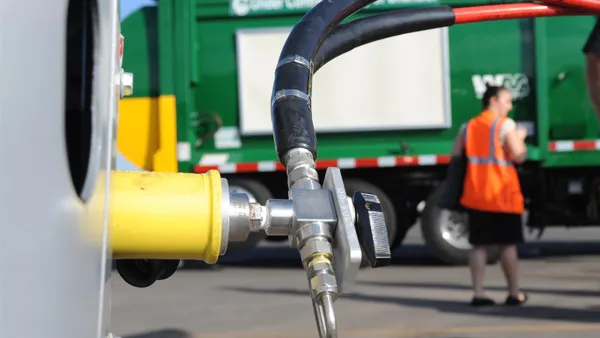Baltimore, MD has stepped out of the box with a one-of-a-kind model to manage municipal trash, power homes, and educate citizens and cities around the world—all without leaving the Harbor.
Baltimore’s urban innovation is Mr. Trash Wheel: a water wheel powered by solar energy and the river current, which picks up litter along the Inner Harbor at the end of the Jones River. The trash, which flows to that area from storm drains, is transported to a Baltimore waste-to-energy facility to make electricity.
"Our primary goal was to keep trash out of the Harbor and Chesapeake Bay and ultimately support an initiative to make the Harbor swimmable and fishable by 2020," said Adam Lindquist, director of the Healthy Harbor Initiative, launched by the Waterfront Partnership.
The partnership helped fund the $750,000 wheel, which has removed more than 350 tons of trash and debris from the Harbor since its May 2014 installation. That includes more than 80,000 plastic bottles, more than 90,000 foam containers, 36,000 plastic shopping bags, 66,000 snack bags, and 4 million cigarette butts.
The floating trash machine borrows from a concept leveraged by the region’s mills over 200 years ago; back then, the river provided power to turn wheels, which in turn powered equipment. But Baltimore combined both old and new renewable energy concepts by adding 30 solar panels that provide a secondary source of power. Huge booms capture the trash and funnel it to the front of the wheel, and rakes pull the litter from the water, up onto a conveyor belt.
"We saw potential in [an earlier] pilot, though the original wheel was undersized and underpowered," said Lindquist. The bigger and better technology is paid for by the Maryland Port Administration and Constellation, a natural gas and renewable energy company that is an arm of Exelon. The Waterfront Partnership and Baltimore’s Public Works Department fund ongoing operations.
How the wheel gained traction
Municipalities, entrepreneurs, and environmental philanthropists from Singapore to Rio—as well as in Philadelphia, Honolulu and nearly 30 other U.S. cities—have called the city to learn about the wheel, which is garnering such far-reaching attention with a voice of its own: it has a Twitter handle.
Should I fill my friend's stockings with cigarette butts or discarded chip bags? It's so hard to give good gifts when you're a trash wheel.
— Mr. Trash Wheel (@MrTrashWheel) December 14, 2015
Even this video showing Mr. Trash Wheel in action has been viewed about 1.5 million times.
"I think the water wheel has gotten so much attention because we did not put out a crazy scheme like those you see almost every week. We built it and showed it working, so people see it is feasible," said Lindquist. He believes the technology has tremendous potential to clean up litter from waterways all around the world, enabling cities to ensure the water they discharge is clean.
Currently, dirty urban and suburban storm water generates about 15% of the nitrogen entering the Bay. That figure is increasing, with Baltimore’s Inner Harbor contributing to the problem as it funnels into this larger body, according to the Environmental Protection Agency. The Bay’s high nitrogen content is a key reason it remains on EPA's "dirty waters" list and is subject to the Chesapeake Clean Water Blueprint.
Beyond the water wheel
Baltimore’s environmentalists keep pushing forward to clean water streams through innovations like the water wheel, and through projects such as one focused on maintaining floating wetlands that filter pollution from the Harbor and on providing a habitat for marine life.
The city is even working to tackle its trash problems beyond the Harbor. Mayor Stephanie Rawlings-Blake recently launched a "Clean Corps" initiative, calling on Baltimore residents to participate in organized block-wide cleanups and door-to-door campaigns. The administration also plans to spend about $10 million on heavy-duty garbage cans for residents, with lids and wheels to deal with a rat problem.
"The city of Baltimore, like many cities across the country, faces issues that plague our streets ... pollute our waterways, and reduce property values,” said Rawlings-Blake in October. "Litter can be found blowing across the streets of Baltimore. It's just wrong. And we know that we can do better."









